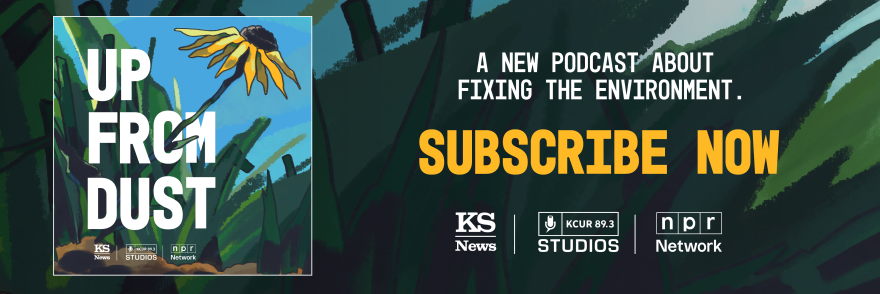Kansas State University scientists are enlisting the help of artificial intelligence in the effort to conserve what’s left of North America’s shrinking grasslands.
Zak Ratajczak, an assistant professor and grassland biologist, says K-State scientists have trained a computer model to map in detail different kinds of woody vegetation affecting prairies, such as the aggressively spreading evergreens called eastern red cedars.
“You have to give it lots of samples,” Ratajczak said. “Then it figures out what the general characteristics are of eastern red cedar based on height and how it absorbs and reflects different types of light back to the camera.”
The K-State team uses high-resolution imagery and data captured by airplanes and feeds it into the model, which can distinguish between deciduous trees, shrubs and eastern red cedars.
They used open-source machine learning and publicly available aerial data. Ratajczak and graduate student Brynn Noble laid out the project in the July issue of the journal Remote Sensing.

The U.S. Department of Agriculture and the National Science Foundation use planes to gather detailed data that they then make available for free to the public.
The National Science Foundation plane has camera equipment that takes in 1,000 wavelengths of light. It also sweeps the grassland at the Konza Prairie Biological Station with lasers in thousands of frequencies that bounce off the ground and return to the plane’s sensor. This allows K-State to build a three-dimensional map of the vegetation.
The Konza station is an 8,600-acre tallgrass property near Manhattan used for long-term research.
“ We visited the (National Science Foundation) plane that gathers the data and it’s really impressive,” Ratajczak said. “They do a lot of the hard steps and then we get all this data for free.”
K-State scientists built their model using the free coding language R, frequently used by scientists for data analysis. They trained it by giving it many aerial images of each type of vegetation.
The scientists then had the model try to identify further images on its own, and they double-checked whether the model was interpreting the images correctly. The model gave the right answer more than 97% of the time.
The K-State team has focused so far on the Konza property. But it hopes to expand the work — mapping out the prevalence of deciduous trees, eastern red cedars and shrubs across the Flint Hills tallgrass region.
This would help them see the full extent of the problem.
For decades, woody plants have been spreading across the Great Plains, to the point that they are transforming grassland into woodland and shrubland. Scientists in Oklahoma have dubbed the phenomenon the Green Glacier.
Common invaders in the Flint Hills include eastern red cedars, wild plum, roughleaf dogwood and smooth sumac. (These last three are shrubs or thickets.)
The Green Glacier is fueled by a host of human changes to the Great Plains since European colonization of North America.
A few examples include planting millions of trees in grasslands since that time and severely reducing the application of fire that Native Americans had long used to support grasslands.

Additionally, the realities of modern-day landownership pose a challenge. The continent’s remaining grasslands are divided among many different landowners with varying priorities for how to use the land and varying capacities for maintaining it.
Another key change is the increase of carbon dioxide in the atmosphere since the Industrial Revolution. This helps woody plants grow faster on prairies, shading out grasses around them and surviving prescribed burns.
Mapping woody plants in great detail could help pinpoint how much forage for cattle and bison is lost each year to this transformation.
Already, scientists have estimated that the Flint Hills would grow about a billion more pounds of grass annually if not for trees and shrubs overtaking so much space.
K-State’s use of machine learning could also help researchers better track the relationship between this habitat transformation and declining grassland bird species, such as grasshopper sparrows and eastern meadowlarks.
Those species disappear from areas of grassland once low levels of shrubs and trees have invaded.

Eventually, K-State scientists hope that their advancements in mapping out woody plants with AI will help conserve swaths of grassland currently free of woody plants but likely to face that threat in coming years.
“One of the things we are thinking about using this for is early detection and intervention,” he said.
Nearly one-third of North America was once grassland. More than half of it disappeared for development such as row crops, cities and suburbs. And for tallgrass prairie — the kind of grassland in the Flint Hills — the statistics are even worse. Scientists estimate that less than 5% of the continent’s tallgrass remains.
The Flint Hills is the biggest remaining stretch of tallgrass prairie. That’s another reason for the urgency to deal with shrubs and trees there.
Some parts of the Flint Hills are already awash in these plants, but other areas still have a chance to proactively hold the hardest-to-control woody species at bay.
“ If you can catch encroachment (the spread of woody plants) when it’s in the early stages,” Ratajczak said, “it’s potentially easier to either halt or reverse using prescribed fire.”
Celia Llopis-Jepsen is the environment reporter for the Kansas News Service and host of the environmental podcast Up From Dust. You can follow her on Bluesky or email her at celia (at) kcur (dot) org.
The Kansas News Service is a collaboration of KCUR, Kansas Public Radio, KMUW and High Plains Public Radio focused on health, the social determinants of health and their connection to public policy.
Kansas News Service stories and photos may be republished by news media at no cost with proper attribution and a link to ksnewsservice.org.









